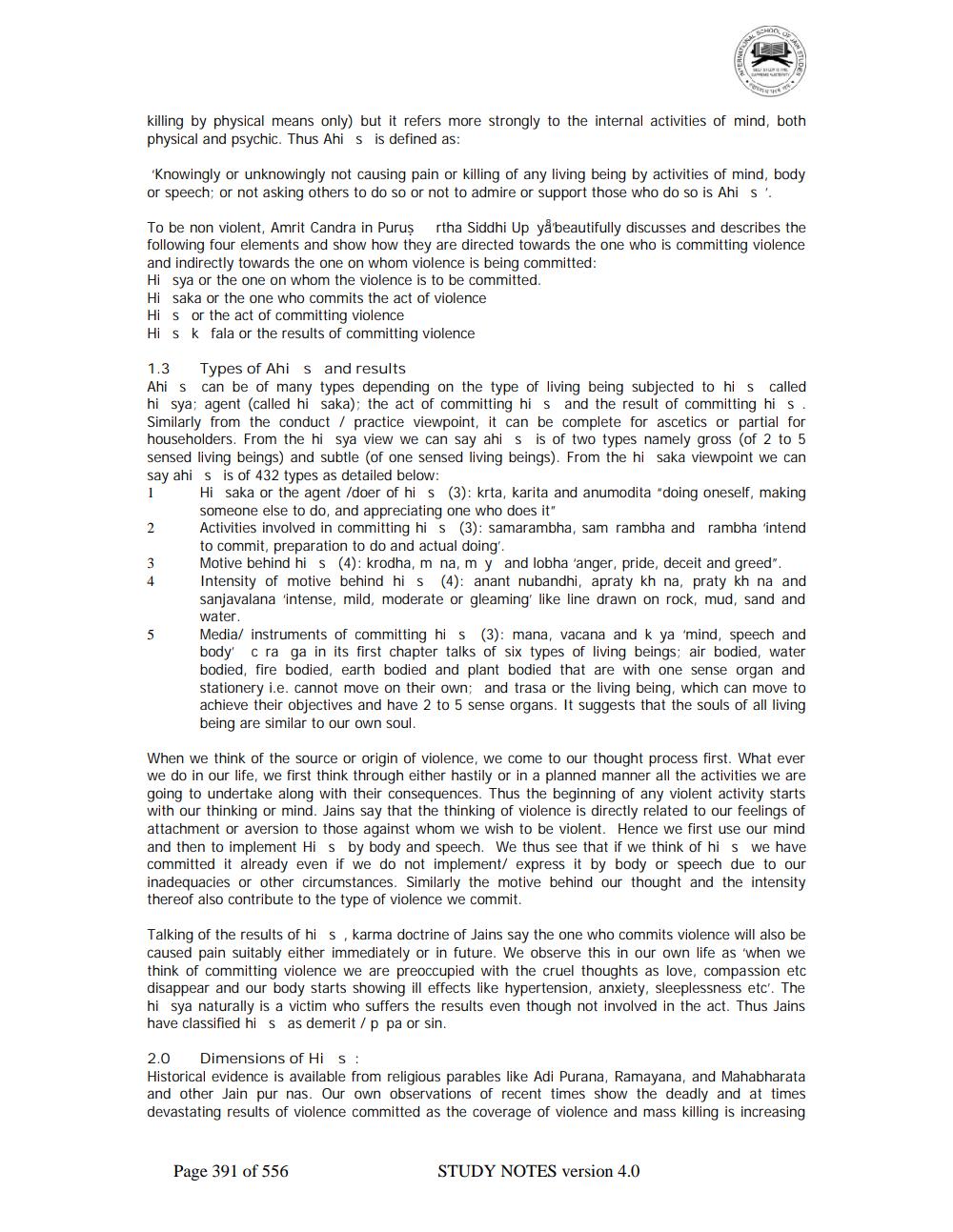________________
killing by physical means only) but it refers more strongly to the internal activities of mind, both physical and psychic. Thus Ahi s is defined as:
'Knowingly or unknowingly not causing pain or killing of any living being by activities of mind, body or speech; or not asking others to do so or not to admire or support those who do so is Ahi s'.
To be non violent, Amrit Candra in Puruş rtha Siddhi Up yå'beautifully discusses and describes the following four elements and show how they are directed towards the one who is committing violence and indirectly towards the one on whom violence is being committed:
Hi sya or the one on whom the violence is to be committed.
Hi saka or the one who commits the act of violence
His or the act of committing violence
Hisk fala or the results of committing violence
1.3
Types of Ahi s and results
Ahi s can be of many types depending on the type of living being subjected to his called hi sya; agent (called hi saka); the act of committing his and the result of committing his. Similarly from the conduct / practice viewpoint, it can be complete for ascetics or partial for householders. From the hi sya view we can say ahi s is of two types namely gross (of 2 to 5 sensed living beings) and subtle (of one sensed living beings). From the hi saka viewpoint we can say ahis is of 432 types as detailed below:
1
Hi saka or the agent /doer of his (3): krta, karita and anumodita "doing oneself, making someone else to do, and appreciating one who does it"
Activities involved in committing his (3): samarambha, sam rambha and rambha 'intend to commit, preparation to do and actual doing'.
Motive behind his (4): krodha, m na, m y and lobha 'anger, pride, deceit and greed". Intensity of motive behind his (4): anant nubandhi, apraty kh na, praty kh na and sanjavalana 'intense, mild, moderate or gleaming' like line drawn on rock, mud, sand and water.
Media/ instruments of committing his (3): mana, vacana and k ya 'mind, speech and body' c ra ga in its first chapter talks of six types of living beings; air bodied, water bodied, fire bodied, earth bodied and plant bodied that are with one sense organ and stationery i.e. cannot move on their own; and trasa or the living being, which can move to achieve their objectives and have 2 to 5 sense organs. It suggests that the souls of all living being are similar to our own soul.
2
3
4
5
When we think of the source or origin of violence, we come to our thought process first. What ever we do in our life, we first think through either hastily or in a planned manner all the activities we are going to undertake along with their consequences. Thus the beginning of any violent activity starts with our thinking or mind. Jains say that the thinking of violence is directly related to our feelings of attachment or aversion to those against whom we wish to be violent. Hence we first use our mind and then to implement His by body and speech. We thus see that if we think of his we have committed it already even if we do not implement/ express it by body or speech due to our inadequacies or other circumstances. Similarly the motive behind our thought and the intensity thereof also contribute to the type of violence we commit.
Talking of the results of hi s, karma doctrine of Jains say the one who commits violence will also be caused pain suitably either immediately or in future. We observe this in our own life as 'when we think of committing violence we are preoccupied with the cruel thoughts as love, compassion etc disappear and our body starts showing ill effects like hypertension, anxiety, sleeplessness etc'. The hi sya naturally is a victim who suffers the results even though not involved in the act. Thus Jains have classified his as demerit/p pa or sin.
2.0
Dimensions of His :
Historical evidence is available from religious parables like Adi Purana, Ramayana, and Mahabharata and other Jain pur nas. Our own observations of recent times show the deadly and at times devastating results of violence committed as the coverage of violence and mass killing is increasing
Page 391 of 556
STUDY NOTES version 4.0




